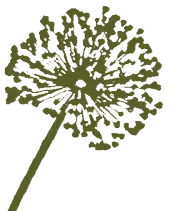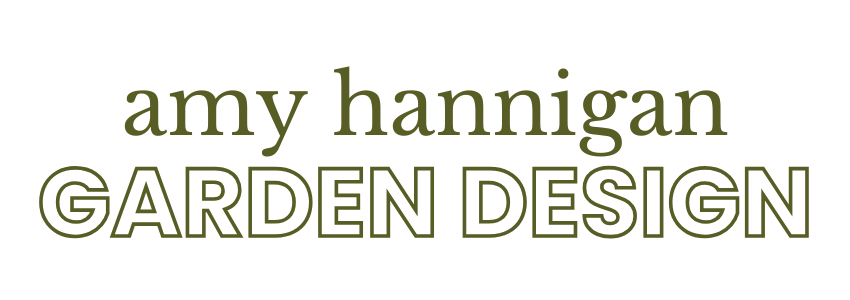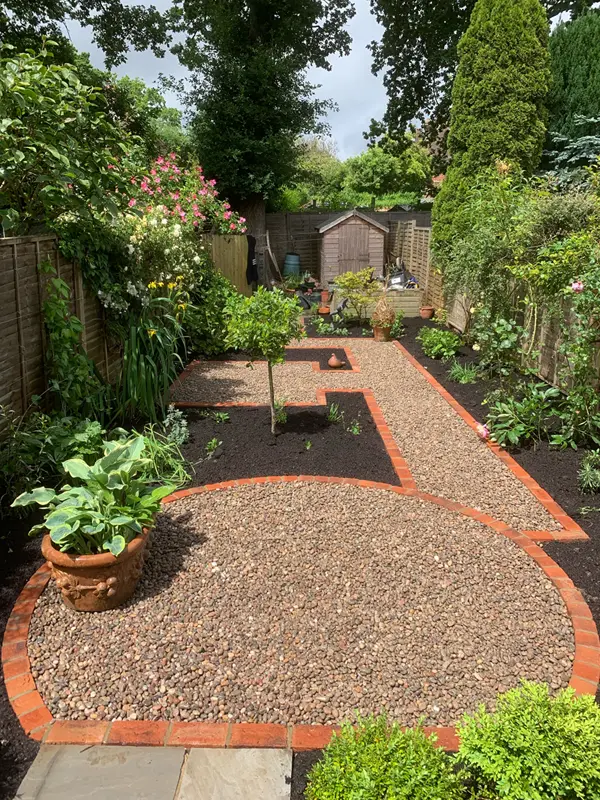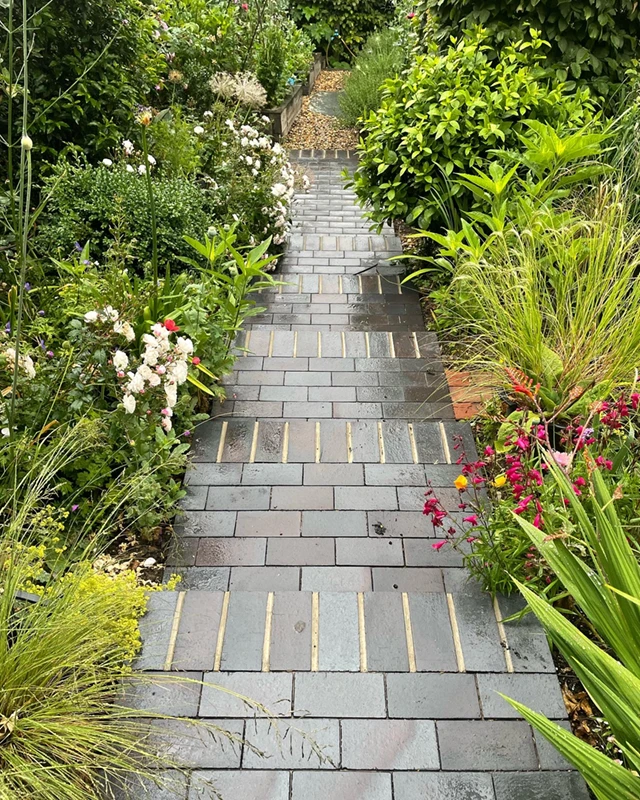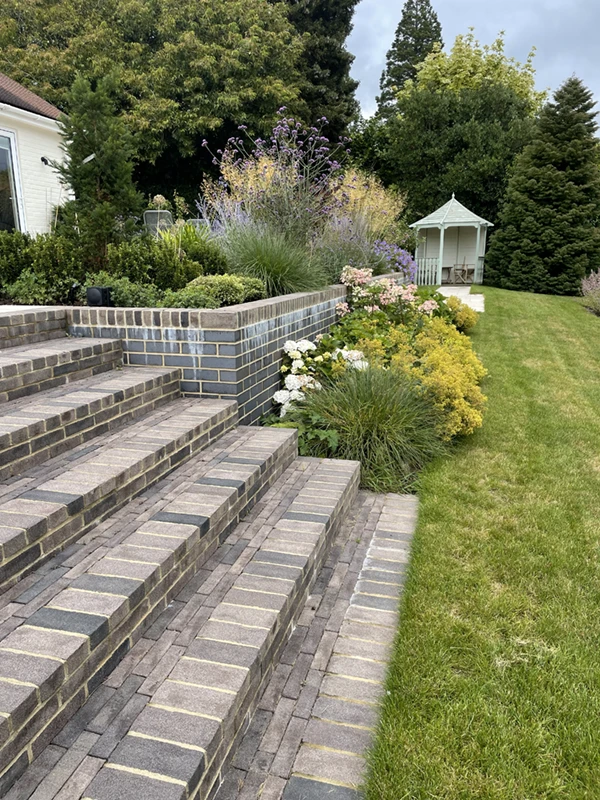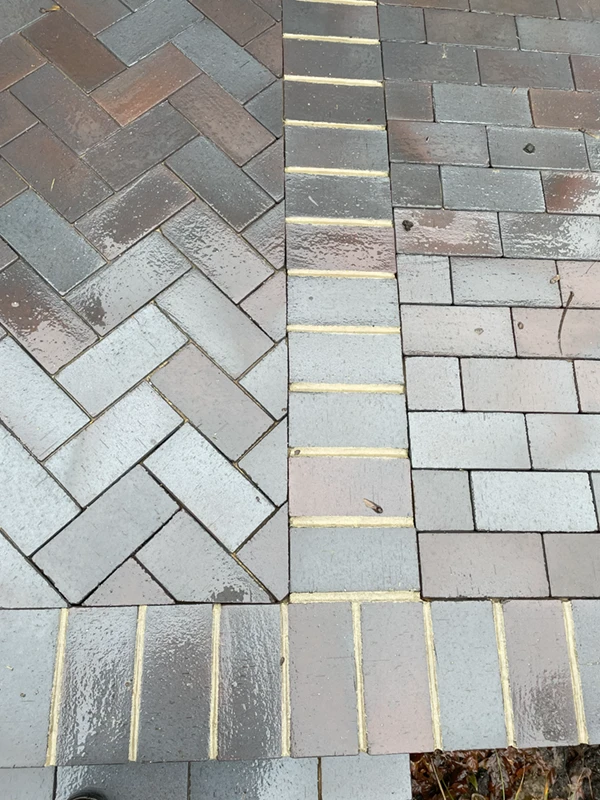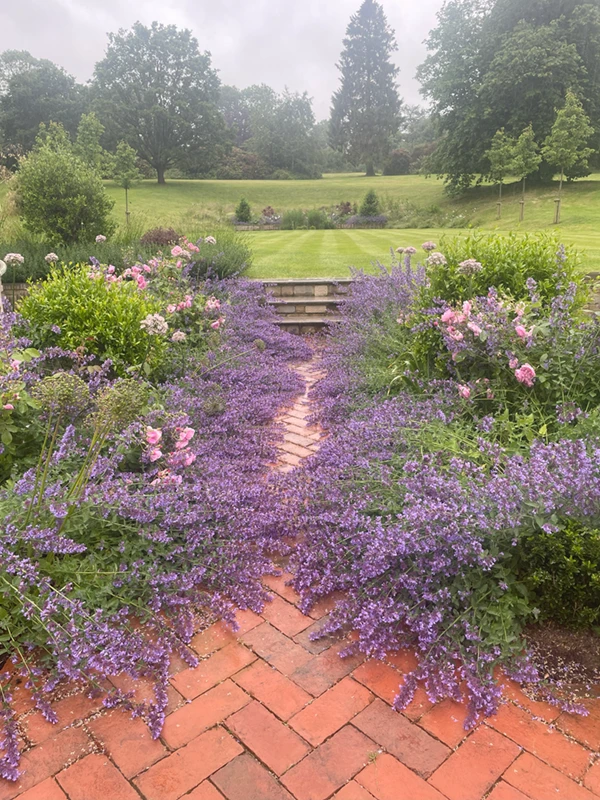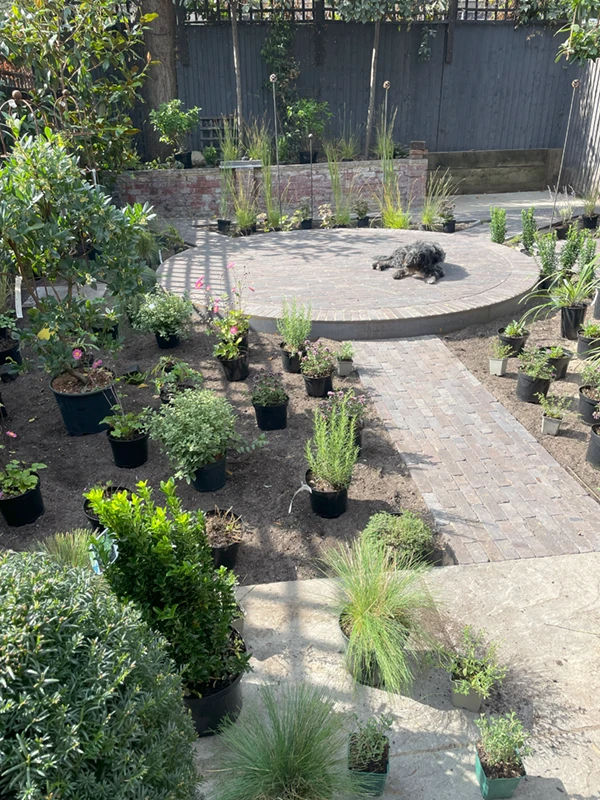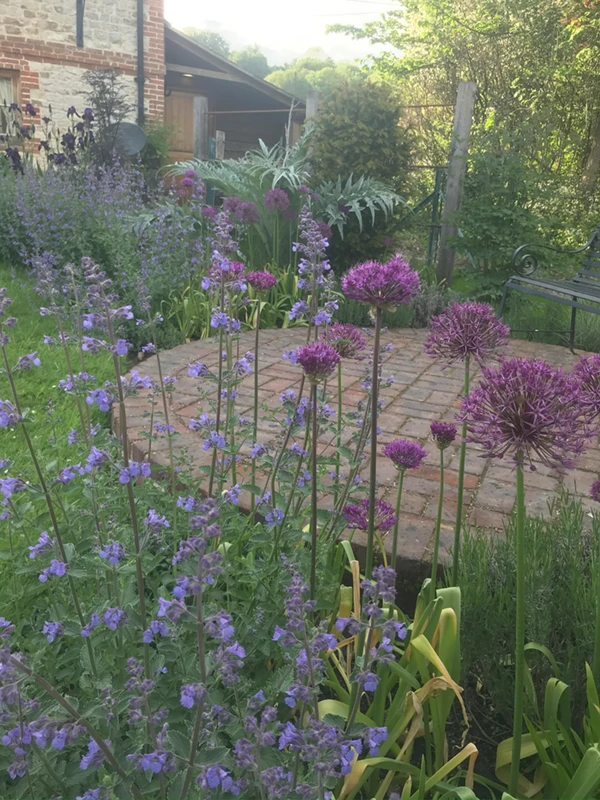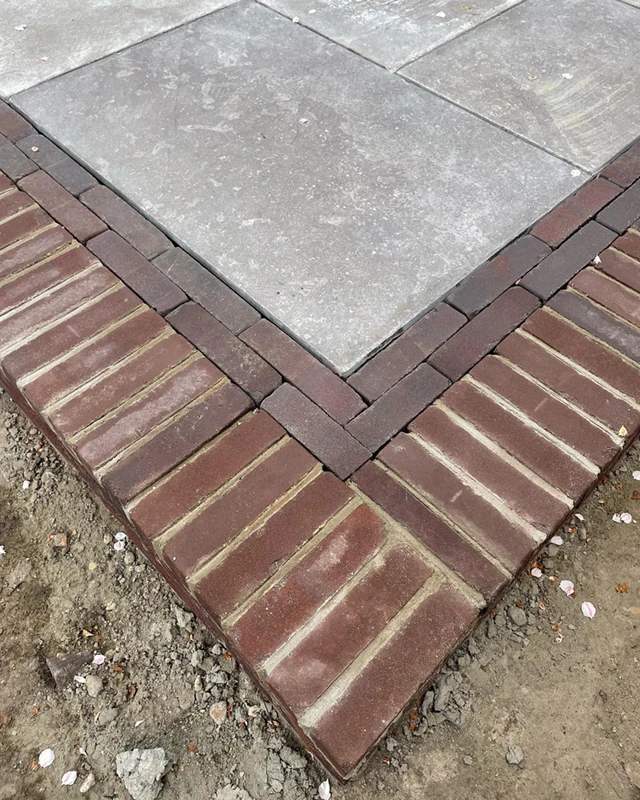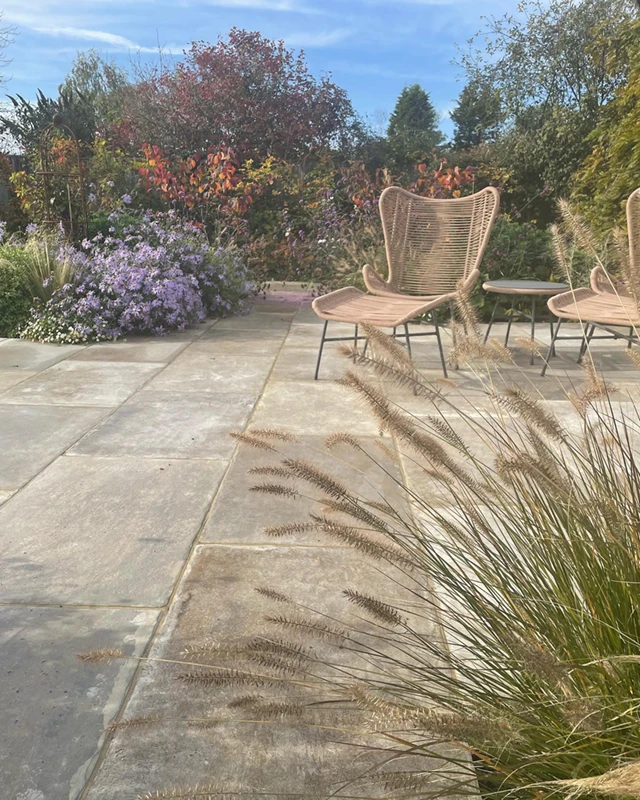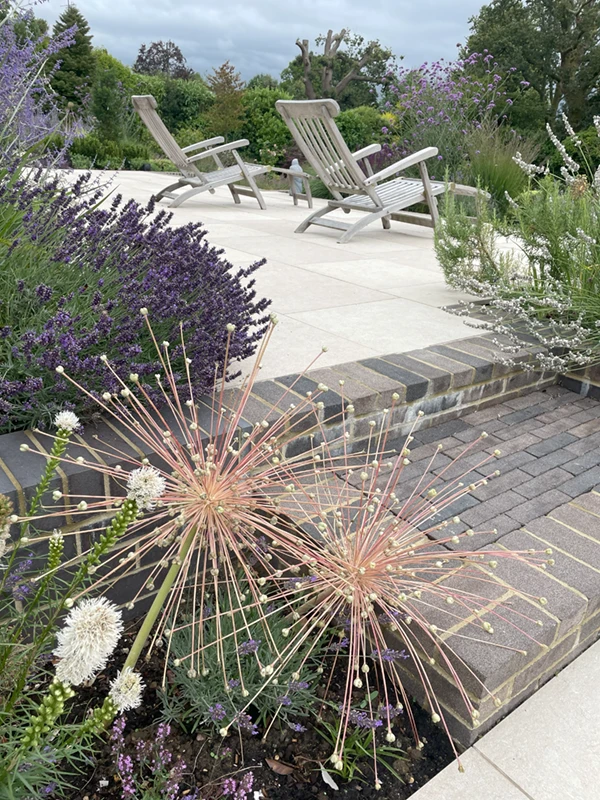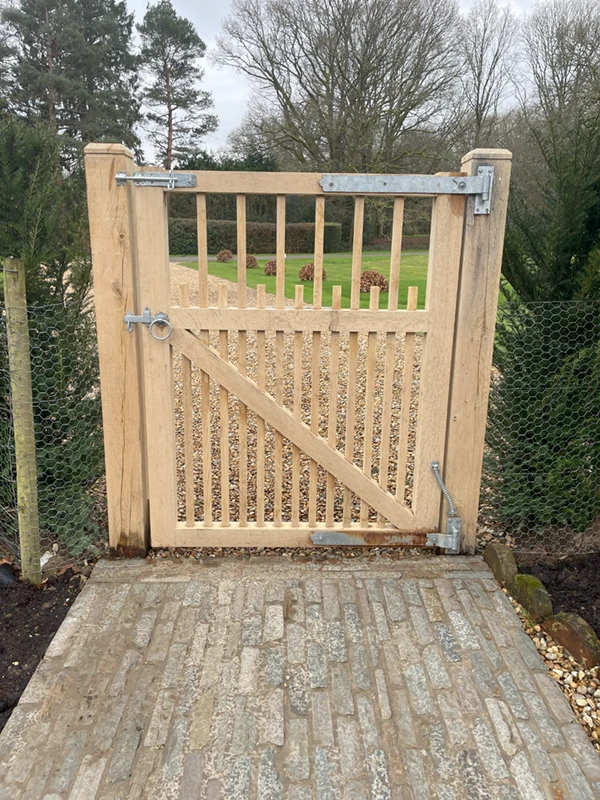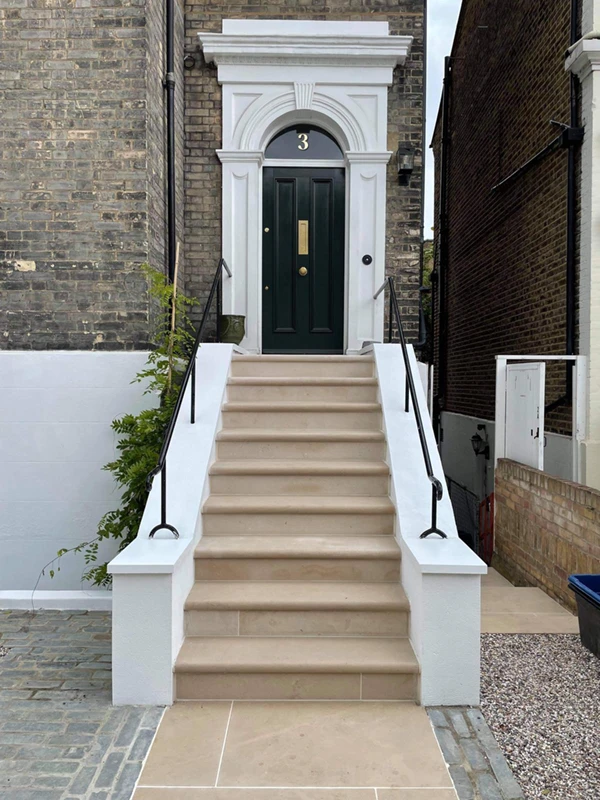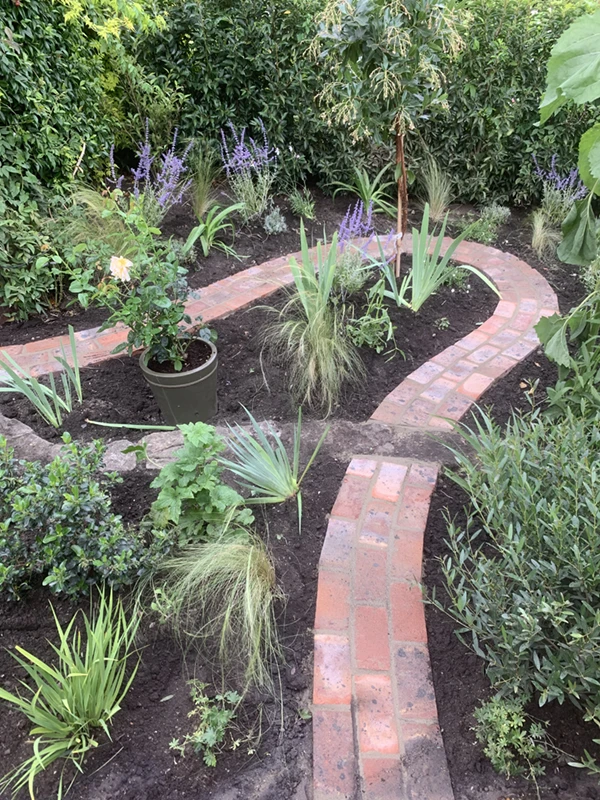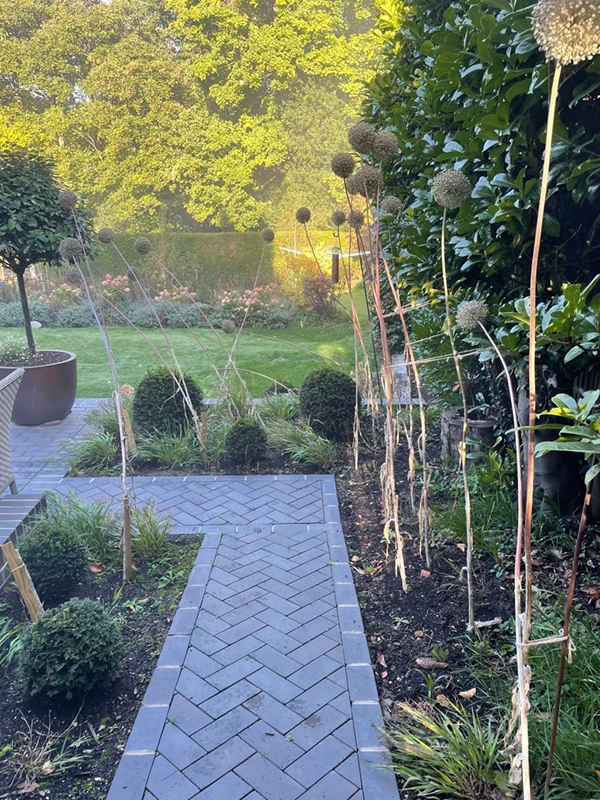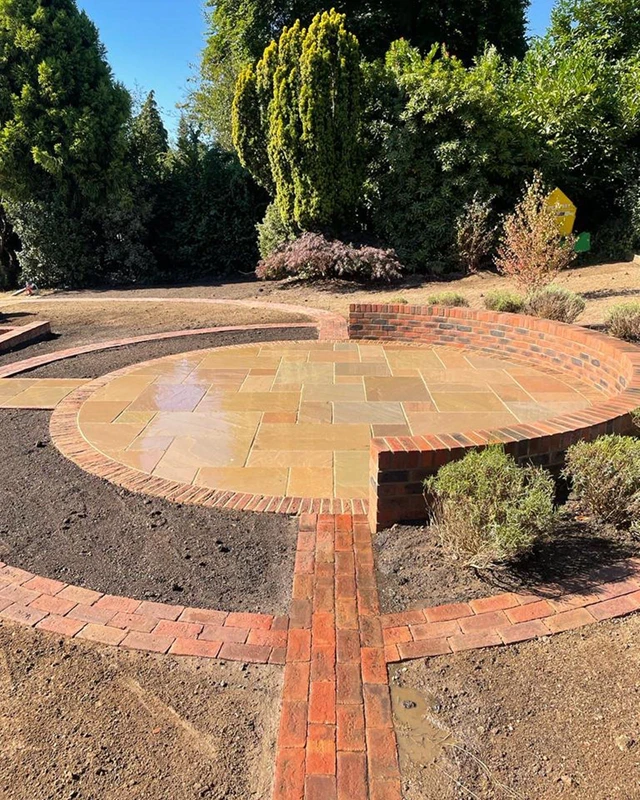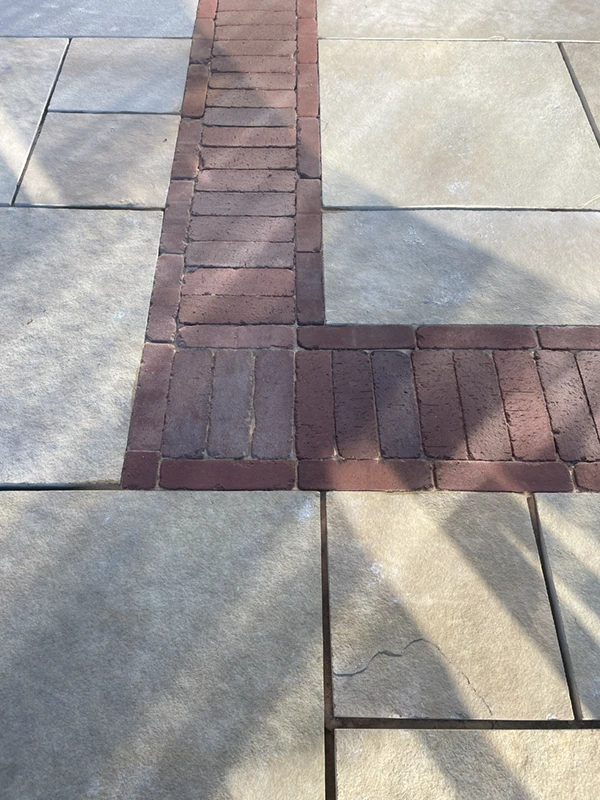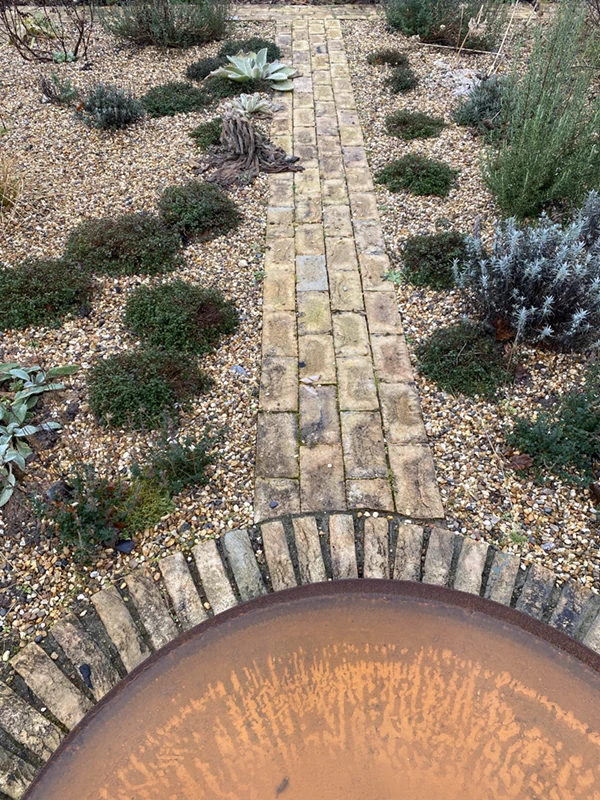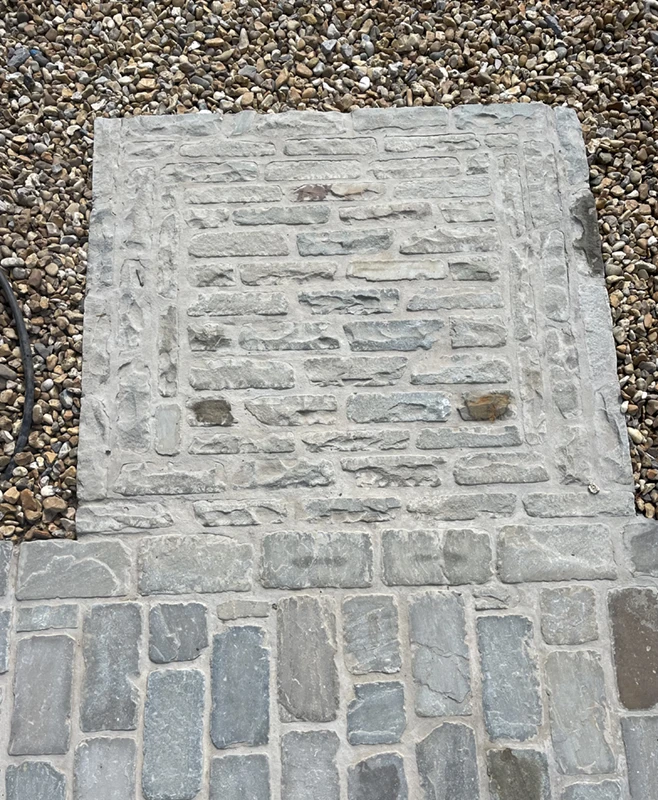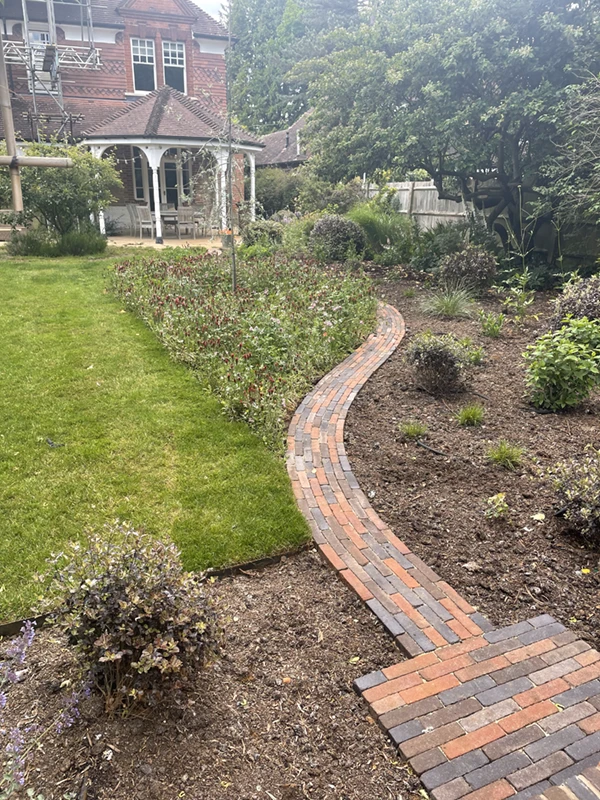Where possible Amy endeavours to choose paving as sustainably as the project allows, ideally using recycled or ethically sourced stone.
She and her team enjoy using pavers, partly for the fun in pattern-making they allow, but also as they are easily reused and re-sited if the garden build is dismantled in due course. Whilst Amy’s astute eye and creativity mean she tries to inject some interest and imagination into paved areas, attention is always paid to practical considerations of transit around the garden, and the use of the hard landscaping to create comfortable and useable seating areas, a journey around the space, and a practicality around the necessary routes of house to bins, house to washing line, house to garden rooms and so on.
Not sure what hard landscaping is?
Hard landscaping provides structure and function to a garden, while soft landscaping refers to the living elements, such as plants and flowers.
Hard landscaping refers to the non-living elements of landscaping, such as:
- Paths and walkways: Made from materials like concrete, brick, gravel, or stone.
- Patios and decks: Areas for seating and entertaining, constructed from materials like concrete, pavers, or wood.
- Retaining walls: Used to create terraces, level slopes, or provide structural support.
- Fences and walls: Provide privacy, security, and define boundaries.
- Water features: Fountains, ponds, and waterfalls add visual interest and a sense of tranquility.
- Driveways: Provide access to the property for vehicles.
- Stonework: Decorative elements like rock gardens, stone sculptures, or dry-stacked walls.
